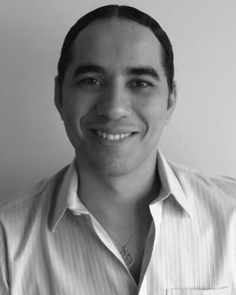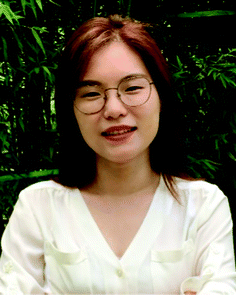Contributors to the emerging investigators issue 2018
Elizabeth (Liz) New established her independent research career at the University of Sydney in 2012. She currently holds a Westpac Research Fellowship.
Many of the most pertinent questions in medical research today concern the chemistry of biological systems, and there is therefore a need to visualise chemical species and processes with high specificity and selectivity. I am privileged to be able to work with an enthusiastic team of more than a dozen research students and postdocs to develop fluorescent sensors for biological application, with a particular emphasis on oxidative stress, and both essential and therapeutic metals. I am also fortunate to have a network of biological collaborators around the world to identify the most relevant chemical questions, and apply our tools in the most exciting studies.
I am passionate about developing current and future generations of young scientists. I currently serve on the executive of the Australian Academy of Science's Early–Mid Career Researcher (EMCR) Forum, the voice of EMCRs in Australia. I am heavily involved in university teaching, sharing and developing a love of chemistry by promoting active engagement in the learning process, and I regularly speak about my research to high school students around the country.
I spent 18 years in a county called Changshan, which is my hometown, the place I started my journey. Most of the buildings and landmarks do not exist anymore and remain only in memory, due to the fast growth of the economy and reconstruction. After 4 years at ZSTU for my bachelor studies, it is already my 11th year in Europe. During the last ten years, I finished my Masters and PhD studies, and recently Habilitation as well. Being attracted by new chemical bond formation and creation of new molecules, my group members and I are working on the development of new methodologies, and we have published over 200 publications during the last ten years. Our main topics are carbonylation, heterocycle synthesis, cross-couplings and small molecule activation. Most importantly, I have my own family (married to Qingyuan, who supports crucially) and have had two lovely children (Nuoyu and Nuolin) during the last ten years.
Since I was a teenager, I have had two passions: science and music! Of course, in my youth my first goal was to be a rock star. Imagine, travelling around the world and performing music in front of a large audience. I grew up and became a scientist. Now my second passion completely dominates my life. Creating molecules is my art and I feel like a frontman of a rock band when I am presenting a seminar at a conference. I feel privileged to share my passion with students and always keep moving forward. I gain strength from interacting with young minds. My group addresses new challenges involving all aspects related to bioactive quinoidal compounds, for example the synthesis of trypanocidal and antitumor compounds by using C–H bond activation, organocatalysis and photocatalysis, as well as fluorescent substances for bioimaging studies. When I am not thinking about chemistry, I spend my time with my wife, Juliana, and our son Nícolas. Together, we enjoy swimming at weekends, travelling to different places and visiting our family in Brasilia, the capital of Brazil.
I feel very fortunate to work on two-dimensional materials because, as a materials scientist, it is very pleasant to know that there is a big pile of novel materials out there and that we have just scratched the surface. That is exactly one of my driving forces, probably triggered by a somewhat childish curiosity, to explore new two-dimensional materials and I try to spread this passion towards finding new materials to my students and collaborators. But not everything is exfoliating layered crystals to isolate flakes of two-dimensional materials, I am also very passionate about swimming. Indeed, I could never feel more free than after an intense session of swimming before going to work.
I was born in Icheon, South Korea in 1983. I received my PhD from Korea University in 2012 under the supervision of Prof. Jong Seung Kim. After postdoctoral work at The University of Texas at Austin (Prof. Jonathan L. Sessler, supervisor), I began my independent academic career in 2015 in the Department of Chemistry at Sookmyung Women's University in Seoul. My research interests are focused on the development of novel fluorescence-based smart molecules for applications in the sensing and imaging of bioactive species and theranostic drug delivery systems. When not thinking about science, I also enjoy cooking, painting, hiking, and travelling.
As an undergraduate I transitioned through several majors before finding chemistry. It was during an organic chemistry class that I first learned about our ability to control molecular structures and properties—and I was hooked. I ultimately became fascinated with the interaction between light and molecules/materials. Today, the Hanson research group studies photochemical transformations via photoinduced proton/electron transfer and solar energy conversion using multilayer self-assembly at metal oxide interfaces. In short, we are designing and synthesizing molecules that harness light in useful ways. When not in the lab—or biking to and from the lab—I build my Nintendo cartridge collection and spend time with my wife, Debbie, and our young daughter, Bowen, whose enthusiastic navigation of the world brings us joy on a daily basis.
I grew up in Putian, a coastal city in eastern China. My interests in chemistry, and science in general, were deep-rooted during my childhood as my father was a chemical engineer and worked in a major state-owned sugar-making factory. Now my research group is working on developing nanotechnology-inspired solutions to address many energy and environmental challenges, from scalable energy storage systems, programmable materials and devices, to clean water. In my academic-free time, I spend time with my lovely family, wife Dandan, daughter Youjia and baby boy Youhan. We like travelling, hiking, swimming and playing sports like basketball, soccer, and table tennis.
My career in science started when an innocent look and the magic words “it's for school” convinced the local pharmacist to let me purchase the ingredients for rather spectacular experiments in my parents’ garden. Many years later, with some of the innocence worn off and the magic replaced by grant writing, I still get excited by new experiments and ideas. Attacking real-world problems through wild scientific ideas and with a group of people that refuses to fit a single discipline description is what keeps me motivated. I hope that my biggest impact will be through the people that pass through my labs and the rewarding and diverse careers they will pursue in- and outside of science. When not thinking about science I enjoy tea, a good book, Leonard Cohen, swimming, badminton and walks in nature.
I am a synthetic chemist by training but am fascinated by the ways in which biological systems control aspects of selectivity and reactivity by pre-organising the reacting molecules to influence the reaction outcome. I see no reason why we cannot use the same approach with specially designed catalysts, but we need to have the right tools for the job. For us, those tools are reversible non-covalent interactions, very well understood by supramolecular chemists, but perhaps not used to their full potential by synthetic chemists. I enjoy the process of testing a hypothesis, even when the eventual results turn out to be less than desired; if we want to do important research, we have to be prepared that not every experiment will work. We also must keep our eyes open for surprises, as these are one of the great joys of science. Outside the science sphere, I have a two-year old daughter who keeps me busy and makes sure I don’t distract myself with too many hobbies or other interests!
Current projects in my lab include studies on protein oxidation, fundamental sulfur chemistry, sustainable polymers, and new technologies for environmental remediation. I am a passionate advocate for science, regularly sharing the world of chemistry with budding scientists at local schools. Outside of academic life, I enjoy trail running and exploring the world with my partner and daughter.
| This journal is © The Royal Society of Chemistry 2018 |










